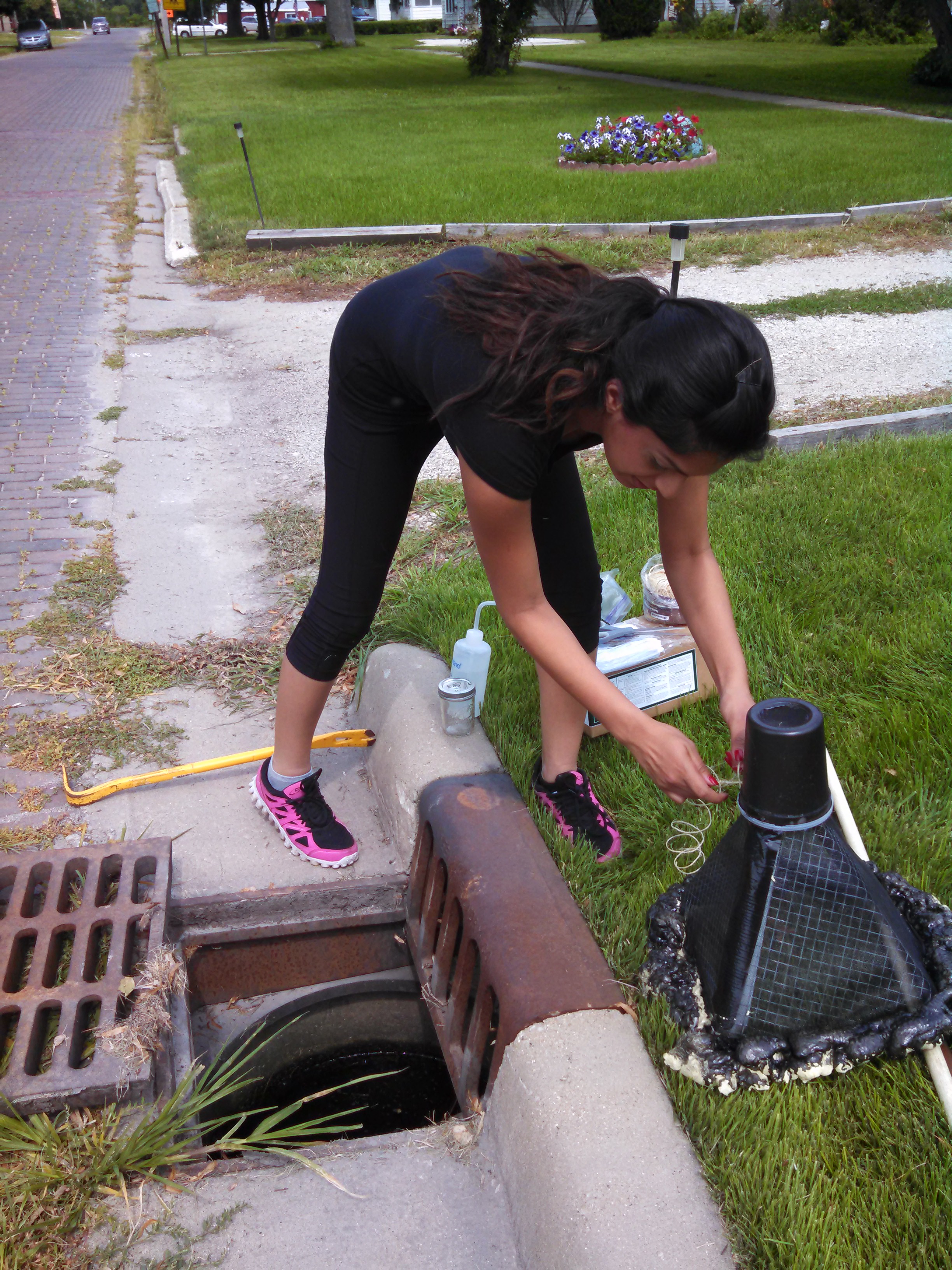Luring mosquitoes into honeysuckle traps

Graduate student Noor Malik sets up a leaf detritus experiment, designed to explore mosquito egg laying behavoir and larval survival, in a storm drain in Paxton, Illinois. Malik graduated from the University of Illinois in 2015. Credit, Allison Gardner
Beyond the blood meal, mosquitoes need sugar and safe and nurturing pools to cradle their eggs and emerging larva. Fallen leaves floating in still water (like residential stormwater drainage ditches) make appealing hatcheries for the common house mosquito (Culex pipiens), a carrier of West Nile virus. At the 2016 Annual Meeting of the Ecological Society in Fort Lauderdale, Florida, this August, Allison Gardner will present the results of experiments manipulating egg laying and larval survival in a suburban storm drainage system during a session on Disease Ecology (II).
Gardner and colleagues found that the leaves of native common blackberry (Rubus allegheniensis) are attractive to gravid female mosquitoes, but inimical to their larvae. Invasive Amur honeysuckle (Lonicera maackii) both attracts females to lay eggs and favors survival to adulthood. The different communities of bacteria that live on the plants appear to play a role in the survival of mosquito larvae. The researchers experimented with honeysuckle leaf “traps” coated in unfriendly bacteria.
- COS 17-1 -Direct and indirect effects of native and invasive plants on mosquito ecology
- Tuesday, August 9, 2016: 8:00 AM, room Palm B, Ft Lauderdale Convention Center
- Allison M. Gardner, School of Biology and Ecology, University of Maine, Orono, ME
Browse more presentations about mosquito ecology at the 2016 Annual Meeting.
